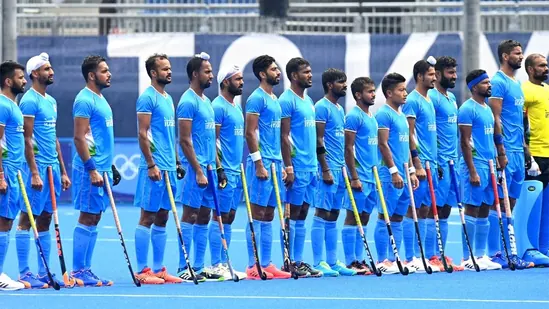Tokyo 2020: It's time to lay a new foundation
Every time the words hockey and Olympics are mentioned in the same sentence, India gets lost in a sepia toned wonderland of nostalgia and gold dust. After all, this is the nation that won eight Olympic gold medals, six of them in consecutive Games, and the overall tally would’ve been 10 had the Second World War not prevented two more opportunities for total dominance in 1940 and 1944.  PREMIUM
PREMIUM
The stories surrounding the Olympic exploits of India’s hockey magicians are endless, and their incredible scoresheets (including 24-1 against Team USA at Los Angeles 1932) well-documented.
The anecdotes, once you start narrating them, eventually funnel up to one man from Jhansi. Born in 1905 (in Allahabad) to an army man, he enlisted at 17 to carry forward the family tradition. Not long after, he picked up a hockey stick. It felt just right, as if something had clicked — the wand chooses the wizard.
Also Read | Tokyo 2020: Indian women's hockey team makes history, enter quarter-finals
This man got so obsessed with hockey that his mates in the barracks would often catch him shadow dribbling long past bedtime, or spot him practising in the moonlight in the regiment yard. The late-night routines led to a nickname that likened him to the moon.
And so, Dhyan Singh became Dhyan “Chand”.
Through the 1920s and 1930s, if cricket, that most colonial of sports which was the country’s other big distraction, had Don Bradman, here was India’s answer. But Dhyan Chand was not the only genius — he was just the brightest star in a galaxy of legends, sons of the soil who played a sport that felt close to their roots, and poured their soul and sweat into it.
The names are too many to be listed: Roop Singh, Jaipal Singh and Richard Allen from the 1920s and 1930s, Balbir Singh Sr, Leslie Claudius, KD Singh Babu and Udham Singh from the 40s and 50s, and Prithipal Singh, Ajit Pal Singh and Aslam Sher Khan from the 60s and 70s are just a few headliners from a 40-year era when they were kings.
Also Read | Tokyo Olympics 2020, Full Coverage
But these sepia toned glory days that go with every subsequent Indian hockey team to the Olympics put a burden of history that is impossible not to buckle under. They are numbers and anecdotes that increase expectations but serve no constructive purpose because they don’t offer context.
We need to focus on different facts and figures to understand how things really are. The last Indian gold was at Moscow 1980, where most of the top teams were missing; the one before that was at Tokyo 1964 – 57 years ago. The last time the Indian team won a medal of any colour (other than in 1980) was a bronze at Munich 1972. And in Beijing 2008 came the nadir – India didn’t even qualify.
The reasons for the decline were many – the arrival of Pakistan meant the Indian hockey nursery was cleaved in half after Partition since Lahore was such a crucial hub; the shift to the artificial turf took the “Indian dribble” out of the picture and made hockey a more physical sport; and the European teams utilised this to their advantage by throwing money, resources and expertise on power hitting and physical conditioning.
But it wasn’t only about how the sport changed. The problem lay in India’s failure to accept that it had.
The 1980s and 90s, which should have been used to make India ready for a different kind of hockey, were spent in denial, and in officials of the Indian Hockey Federation warring rather than working.
When the astro turf was first unrolled in the 1970s, the more affluent nations gave young players access to the surface immediately. In India, by the time players stepped on an artificial turf for the first time, they were already in their 20s (this is true even today in several parts of the country).
Indian hockey kept paying the price for the lost decades, and the European powerhouses kept pulling ahead.
But over the last few years, hope has rekindled. India made the knock-out stage of the Rio Olympics, and have done it again in Tokyo despite a 7-1 drubbing by Australia. How India responded to that loss – beating Spain, defending champions Argentina, and Asian Games champions Japan – displayed character and spirit that separate journeyman teams from those that are world class.
It won’t be easy for India against Britain on Sunday in what is perhaps their most significant match in decades. The last time the Indian team reached the semi-final (other than 1980) was in 1972, on grass. And if they go on to win a medal of any colour, it will be worth several golds. For it will offer something much better than nostalgia – a new foundation to build on.
Experience unrestricted digital access with HT Premium
Explore amazing offers on HT + Economist Start 14 Days Free Trial Already Subscribed? Sign In
Disclaimer: The copyright of this article belongs to the original author. Reposting this article is solely for the purpose of information dissemination and does not constitute any investment advice. If there is any infringement, please contact us immediately. We will make corrections or deletions as necessary. Thank you.







